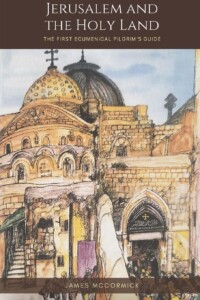Title: Jerusalem and the Holy Land: The First Ecumenical Pilgrim’s Guide
Author: James McCormick
Publisher: Media Literary Excellence
ISBN: 978-1958082553
Pages: 314
Genre: Christian Non-fiction
Reviewed by: Lily Amanda
Pacific Book Review
James McCormick’s assiduously researched pilgrims’ companion, Jerusalem and the Holy Land: The First Ecumenical Pilgrim’s Guide, is a guide written to inspire Christians of all religions and traditions to travel to the nation that God has designated as holy and to assist them in becoming better believers and more committed followers of Christ.
After Abraham received a divine command to leave Ur, he relocated to Canaan, which is the Holy Land. The area has drawn a large number of tourists from all over the world who come to enjoy its attractions, history, gorgeous landscape, intriguing culture, and exceptional biblical aura. According to McCormick, many tourists and pilgrims have been shocked to discover that many of these places are not what they seem to be in the creative religious artworks that depict them. As such, he felt compelled to give a detailed account of the events that have transpired in the nation throughout the last few decades.
In addition to analyzing historical periods and the incentives for Muslims, Christians and Jews to conduct pilgrimages, McCormick presents an overview of the Holy Land’s history and the difficulties of medieval pilgrimages. His grasp of the differences between the pilgrimages taken by Orthodox, Protestant, and Catholics today is invaluable. In this book, he takes spiritual preparation seriously in order to deliver the most beneficial spiritual experience possible, rather than merely physical preparation. He ably illustrates the importance of the Temple Mount’s Western Wall, one of the holiest places in the Holy Land, and argues persuasively for the immense value of all things related to Jewish history for both believers and non-believers in the Holy Land.
McCormick has thoughtfully examined the Holy Land from the viewpoints of various religions to emphasize the importance of their disparate perceptions of its sacred sites. His expertise encompasses the Ottoman Empire, the history of the Holocaust Museum and Masada, the Christian-Palestinian population, and the Zionist movement, among others. He anticipates a day in the Holy Land when all communities—Arab, Jewish, Muslim, and Christian—will live in harmony with one another, openly admitting other groups to participate in formal worship and accepting one another as fellow divine children. This is an amazing attitude that should be emulated.
Jerusalem and the Holy Land is a profound book that is quite enjoyable to read. It gives readers a taste of the diverse experience that is unmatched anywhere else in the world. All tour operators and accredited guides visiting the Holy Land ought to provide their clients with this book. Whether you are a historian, a religious scholar, or simply someone with a keen interest in this unique part of the world, this book will provide valuable insights and a deeper appreciation for the Holy Land.


